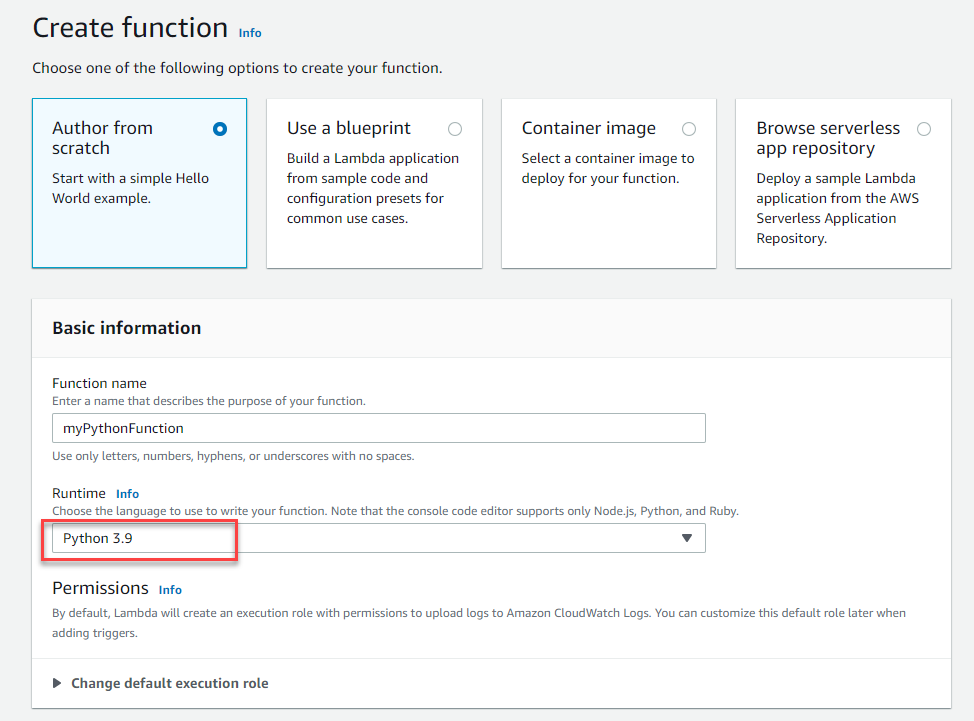AWS Compute Blog
Category: Announcements
Introducing Amazon Simple Queue Service dead-letter queue redrive to source queues
This blog post is written by Mark Richman, a Senior Solutions Architect for SMB. Today AWS is launching a new capability to enhance the dead-letter queue (DLQ) management experience for Amazon Simple Queue Service (SQS). DLQ redrive to source queues allows SQS to manage the lifecycle of unconsumed messages stored in DLQs. SQS is a […]
Introducing mutual TLS authentication for Amazon MSK as an event source
This post is written by Uma Ramadoss, Senior Specialist Solutions Architect, Integration. Today, AWS Lambda is introducing mutual TLS (mTLS) authentication for Amazon Managed Streaming for Apache Kafka (Amazon MSK) and self-managed Kafka as an event source. Many customers use Amazon MSK for streaming data from multiple producers. Multiple subscribers can then consume the streaming […]
Optimize costs by up to 70% with new Amazon T3 Dedicated Hosts
This post is written by Andy Ward, Senior Specialist Solutions Architect, and Yogi Barot, Senior Specialist Solutions Architect. Customers have been taking advantage of Amazon Elastic Compute Cloud (Amazon EC2) Dedicated Hosts to enable them to use their eligible software licenses from vendors such as Microsoft and Oracle since the feature launched in 2015. Amazon EC2 Dedicated […]
Python 3.9 runtime now available in AWS Lambda
You can now create new functions or upgrade existing Python functions to Python 3.9. Lambda’s support of the Python 3.9 runtime enables you to take advantage of improved performance and new features in this version. Additionally, the Lambda service now runs the __init_.py code before the handler, supports TLS 1.3, and provides enhanced logging for errors.
Understanding Amazon Machine Images for Red Hat Enterprise Linux with Microsoft SQL Server
This post is written by Kumar Abhinav, Sr. Product Manager EC2, and David Duncan, Principal Solution Architect. Customers now have access to AWS license-included Amazon Machine Images (AMI) for hosting their SQL Server workloads with Red Hat Enterprise Linux (RHEL). With these AMIs, customers can easily build highly available, reliable, and performant Microsoft SQL Server […]
Announcing migration of the Java 8 runtime in AWS Lambda to Amazon Corretto
Beginning July 19, 2021, the Java 8 managed runtime in AWS Lambda will migrate from the current Open Java Development Kit (OpenJDK) implementation to the latest Amazon Corretto implementation.
Register now for the Serverless Live virtual event
The AWS Serverless team is excited to bring you the second annual serverless-first event, Serverless Live, on May 19. We’ll be livestreaming technical deep dives, demos, and live Q&A to help you get the most out of the cloud. The event opens with a keynote by Adrian Cockcroft, VP of Sustainability Architecture. It’s followed by […]
Scaling your applications faster with EC2 Auto Scaling Warm Pools
This post is contributed by Scott Horsfield, Principal Solutions Architect for EC2 Scalability, Surabhi Agarwal, Senior Product Manager for EC2 Auto Scaling, and Chad Schmutzer, Principal Developer Advocate for Amazon EC2. Customers have been using EC2 Auto Scaling to architect sophisticated, scalable, and robust applications on the AWS Cloud for over a decade. Launched in […]
Optimizing AWS Lambda cost and performance using AWS Compute Optimizer
This post is authored by Brooke Chen, Senior Product Manager for AWS Compute Optimizer, Letian Feng, Principal Product Manager for AWS Compute Optimizer, and Chad Schmutzer, Principal Developer Advocate for Amazon EC2 Optimizing compute resources is a critical component of any application architecture. Over-provisioning compute can lead to unnecessary infrastructure costs, while under-provisioning compute can […]
Using self-hosted Apache Kafka as an event source for AWS Lambda
Lambda now supports self-hosted Kafka as an event source so you can invoke Lambda functions from messages in Kafka topics to integrate into other downstream serverless workflows. This post shows how to configure a self-hosted Kafka cluster on EC2 and set up the network configuration. I also cover how to set up the event source mapping in Lambda and test a function to decode the messages sent from Kafka.







